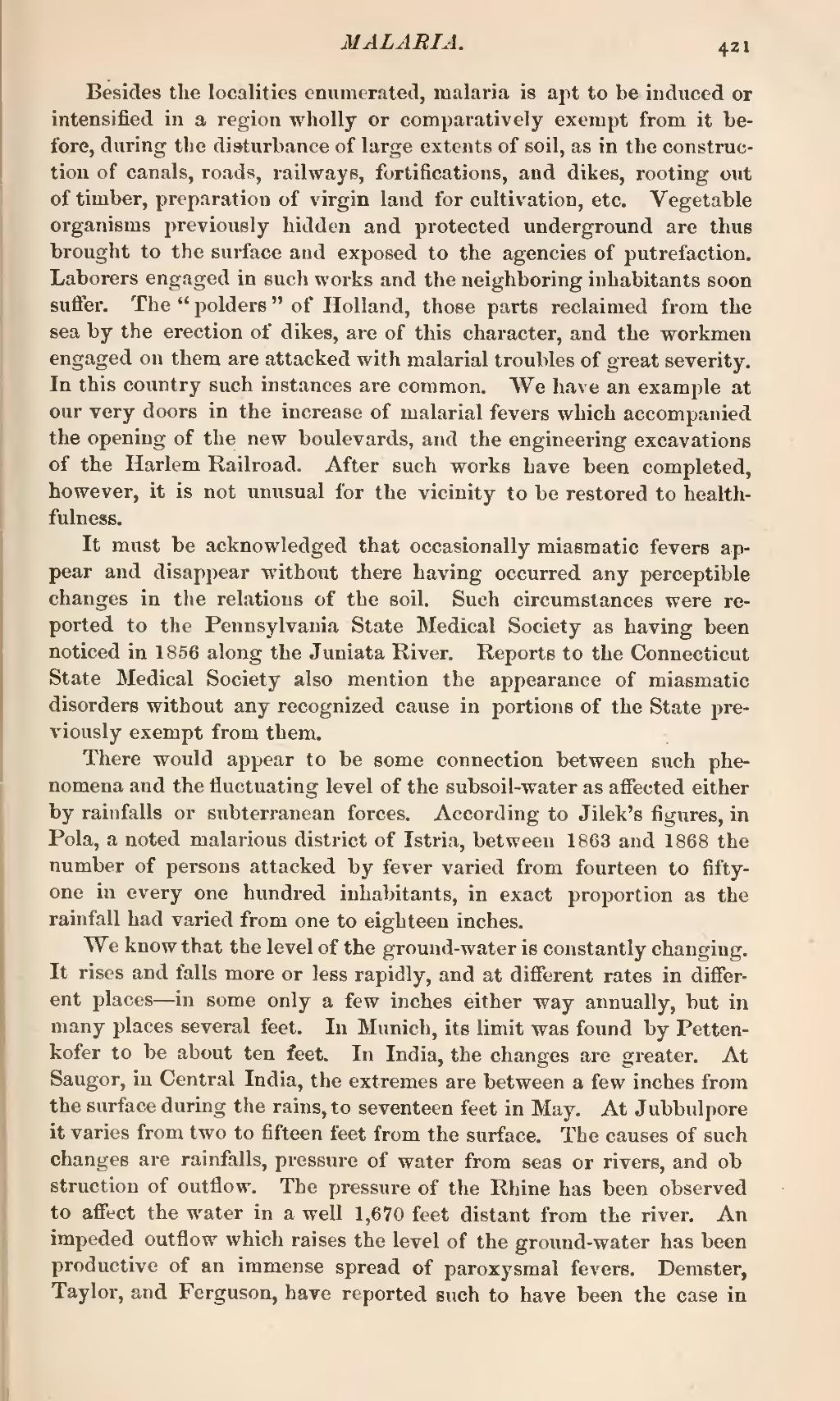Besides the localities enumerated, malaria is apt to be induced or intensified in a region wholly or comparatively exempt from it before, during the disturbance of large extents of soil, as in the construction of canals, roads, railways, fortifications, and dikes, rooting out of timber, preparation of virgin land for cultivation, etc. Vegetable organisms previously hidden and protected underground are thus brought to the surface and exposed to the agencies of putrefaction. Laborers engaged in such works and the neighboring inhabitants soon suffer. The "polders" of Holland, those parts reclaimed from the sea by the erection of dikes, are of this character, and the workmen engaged on them are attacked with malarial troubles of great severity. In this country such instances are common. We have an example at our very doors in the increase of malarial fevers which accompanied the opening of the new boulevards, and the engineering excavations of the Harlem Railroad. After such works have been completed, however, it is not unusual for the vicinity to be restored to healthfulness.
It must be acknowledged that occasionally miasmatic fevers appear and disappear without there having occurred any perceptible changes in the relations of the soil. Such circumstances were reported to the Pennsylvania State Medical Society as having been noticed in 1856 along the Juniata River. Reports to the Connecticut State Medical Society also mention the appearance of miasmatic disorders without any recognized cause in portions of the State previously exempt from them.
There would appear to be some connection between such phenomena and the fluctuating level of the subsoil-water as affected either by rainfalls or subterranean forces. According to Jilek's figures, in Pola, a noted malarious district of Istria, between 1863 and 1868 the number of persons attacked by fever varied from fourteen to fifty-one in every one hundred inhabitants, in exact proportion as the rainfall had varied from one to eighteen inches.
We know that the level of the ground-water is constantly changing. It rises and falls more or less rapidly, and at different rates in different places—in some only a few inches either way annually, but in many places several feet. In Munich, its limit was found by Pettenkofer to be about ten feet. In India, the changes are greater. At Saugor, in Central India, the extremes are between a few inches from the surface during the rains, to seventeen feet in May. At Jubbulpore it varies from two to fifteen feet from the surface. The causes of such changes are rainfalls, pressure of water from seas or rivers, and obstruction of outflow. The pressure of the Rhine has been observed to affect the water in a well 1,670 feet distant from the river. An impeded outflow which raises the level of the ground-water has been productive of an immense spread of paroxysmal fevers. Demster, Taylor, and Ferguson, have reported such to have been the case in
